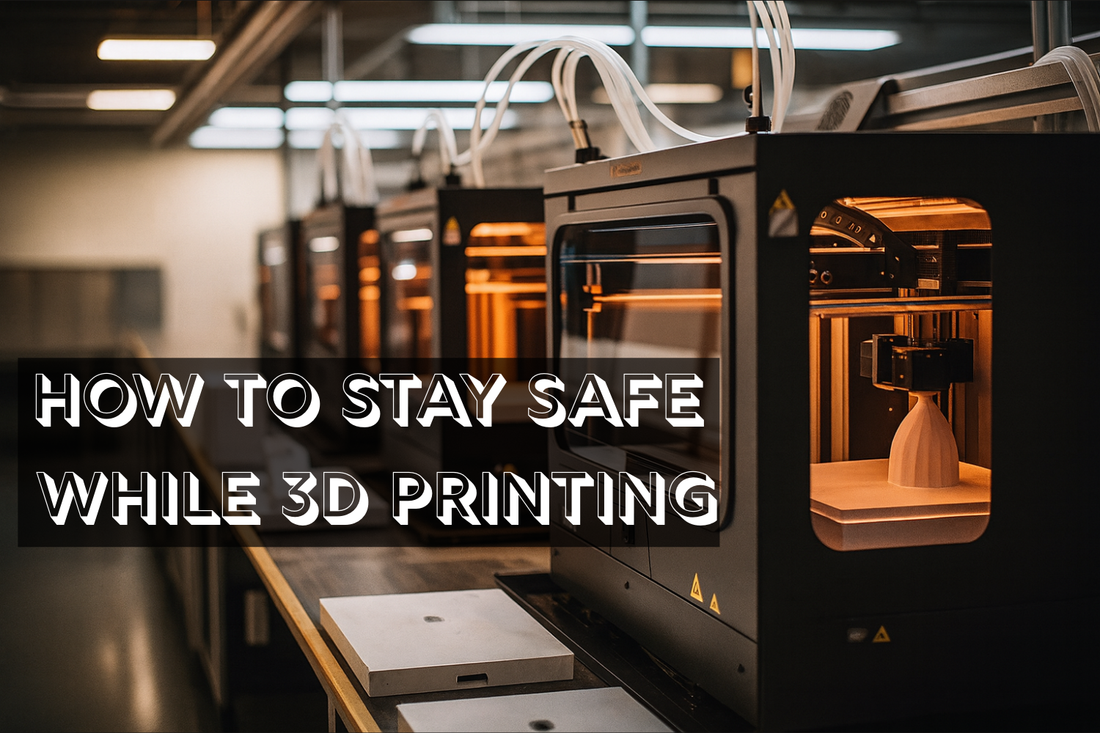If you’ve been learning about 3D printing, you’ve probably seen concerns around fumes and emissions. Our last post explored whether 3D printing fumes are dangerous and the short answer is: they can be if ignored, but with the right precautions, 3D printing is safe.
This follow-up dives into how to set up your workspace, choose safer materials, and protect yourself so you can enjoy the benefits of 3D printing without worry.
Where Do 3D Printing Fumes Come From?
When plastics or resins are heated, they release small amounts of byproducts into the air. The two main types are:
-
VOCs (Volatile Organic Compounds): Chemical gases that can contribute to eye, nose, and throat irritation. Some materials, like ABS, release more VOCs than others.
-
UFPs (Ultrafine Particles): Tiny particles (smaller than 100 nanometers) that can be inhaled deeply into the lungs. While research is ongoing, long-term exposure to high levels of UFPs is considered a potential health risk.
The good news? These emissions can be minimized and managed with proper safety practices.
Safer Material Choices
Not all 3D printing materials produce the same level of fumes:
-
PLA: Low emissions, beginner-friendly, and one of the safest to use.
-
PETG: Stronger than PLA, with moderate emissions that are manageable with ventilation.
-
ABS / ASA / Nylon: Higher VOC and UFP emissions - best used with enclosures and strong ventilation.
-
Resins: Require careful handling and ventilation. Liquid resin and post-processing chemicals (like IPA) demand gloves, masks, and proper curing for safe use.
Ventilation & Workspace Setup
The most important step in safe 3D printing is proper airflow. Here’s what works best:
-
Well-Ventilated Room: Keep printers out of small, enclosed spaces. Open a window or use an exhaust fan.
-
Enclosures with Filters: A sealed printer enclosure with HEPA + activated carbon filters can trap both VOCs and UFPs effectively.
-
Separate Work Area: If possible, dedicate a room or workshop for printing - especially for resin printers.
Personal Safety Practices
-
For FDM printers: Wash your hands after handling filament. Avoid printing right next to living spaces like bedrooms.
-
For resin printers: Always wear nitrile gloves and, ideally, a respirator mask when handling uncured resin. Cure all prints completely before use.
-
For everyone: Keep printers out of reach of children and pets.
Why Safety Matters Long-Term
Safe 3D printing isn’t about overreacting, it’s about making sure this technology stays sustainable for your health, your family, and your business. By managing VOCs and UFPs through smart material choices and ventilation, you can print confidently and responsibly.
Final Thoughts
3D printing is one of today’s most exciting tools, and with the right setup, it’s also safe. Choosing the right materials, managing emissions, and following basic safety practices ensures you’ll enjoy 3D printing for years to come.
At Contrive3D, we don’t just print parts, we also help clients choose materials, design safe setups, and deliver professional 3D printing services without the trial-and-error.
👉 Want expert guidance on safe 3D printing for your home, classroom, or business? Request a consultation today.

